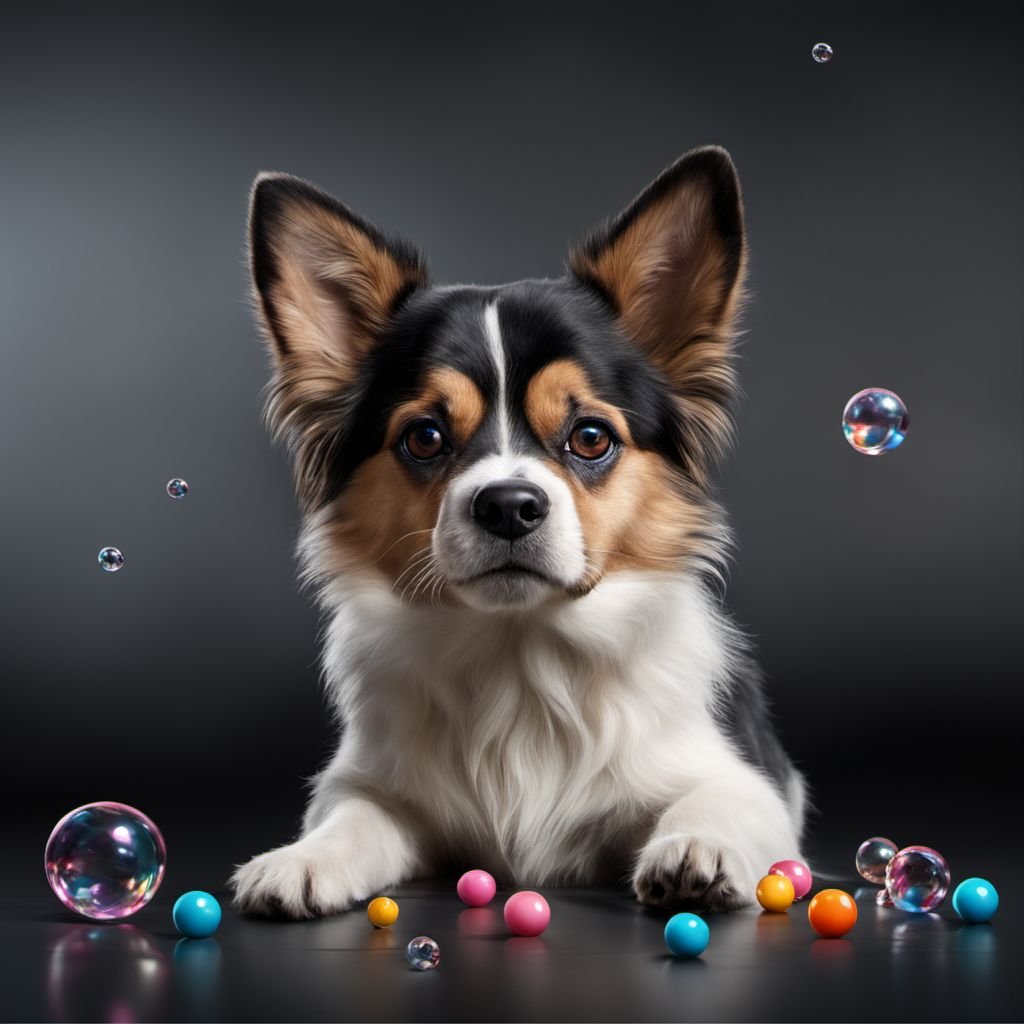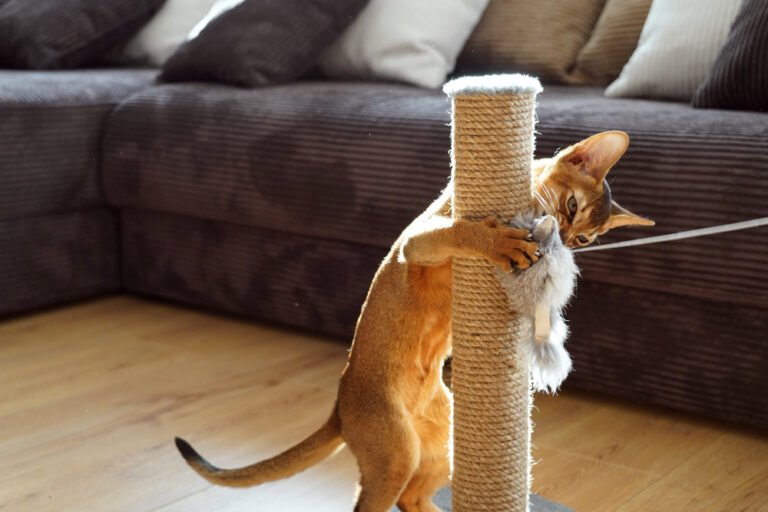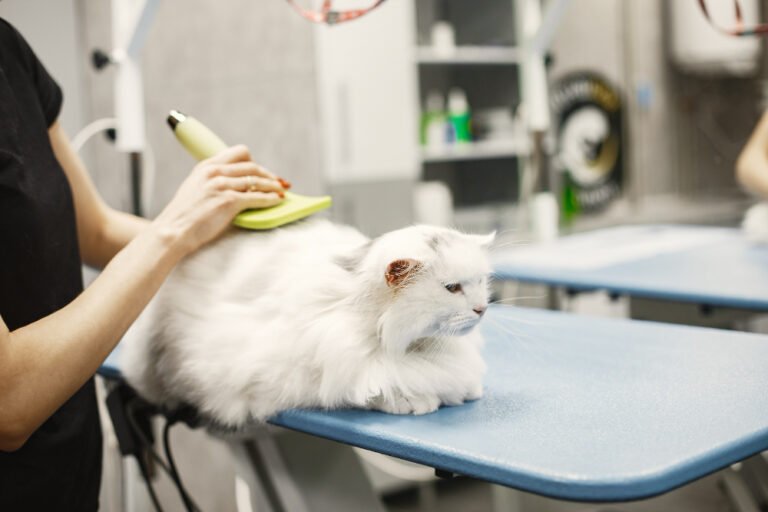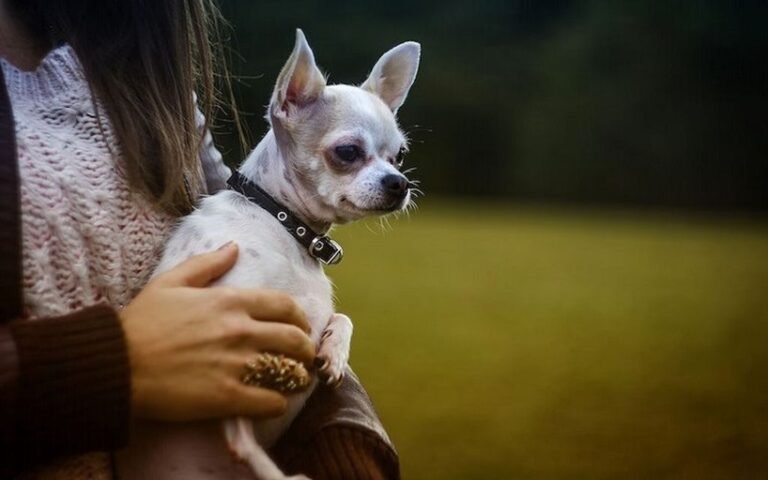Fireworks and Thunderstorms: Calming Strategies for Pets
Fireworks and thunderstorms can be extremely stressful for pets, causing anxiety and fear. It is important for pet owners to understand the impact of these events on their pets and take steps to address their anxiety. This article provides strategies to help calm pets during fireworks and thunderstorms, including creating a safe space, using calming products, and implementing behavioral training techniques. Additionally, natural remedies and supplements, as well as seeking professional help, are discussed. By implementing these strategies, pet owners can help their furry friends feel safe and secure during these loud and unpredictable events.
Key Takeaways
- Fireworks and thunderstorms can cause anxiety and fear in pets.
- Common signs of pet anxiety include shaking, panting, and hiding.
- Creating a safe space for pets can help alleviate anxiety during fireworks and thunderstorms.
- Using calming products and techniques, such as soundproofing and distraction, can also be effective.
- Behavioral strategies, including positive reinforcement training and desensitization, can help calm pets.
Understanding the Impact of Fireworks and Thunderstorms on Pets

How Fireworks and Thunderstorms Affect Pets
Fireworks and thunderstorms can have a significant impact on pets, causing them to experience anxiety and fear. Loud noises from fireworks and thunder can startle pets and trigger their flight or fight response. The bright flashes of fireworks can also be overwhelming for pets, leading to increased stress and anxiety. Additionally, the changes in atmospheric pressure and electrical discharges during thunderstorms can further contribute to a pet’s unease. It’s important to understand these effects in order to effectively address and alleviate pet anxiety during fireworks and thunderstorms.
Common Signs of Anxiety in Pets
Anxiety in our canine companions can emerge in various ways, permeating through their daily behaviors and physical responses. As responsible pet owners, it’s imperative to recognize these anxious dog behaviors and understand that dog anxiety is more than just occasional nervousness; it’s a consistent pattern that can significantly impact their quality of life.
Physical Symptoms of Dog Anxiety
Anxious behavior in dogs often manifests with clear physical symptoms. These can range from visible signs such as excessive panting, which may indicate stress or overheating, to unmistakable shivering even in the absence of cold. Another common anxiety behavior in dogs is incessant pacing, where the dog may seem unable to settle down, circling or walking back and forth as a reaction to the unease they are experiencing.
Behavioral Changes Indicating Anxiety
Dog behavior anxiety can also be observed through changes in actions or temperament. This could include uncharacteristic destruction of property, such as chewing on furniture or shoes, which can often signify an attempt to cope with the anxiety. Excessive barking or howling, particularly in situations where the dog is left alone, can be a plea for attention or a result of separation anxiety. Furthermore, anxious dog
The Importance of Addressing Pet Anxiety
Untreated anxiety in dogs can escalate into more severe behavioral issues and impact their physical health. Directly addressing the problem is pivotal for maintaining a happy and healthy pup. It’s crucial to recognize the signs of anxiety in dogs, such as excessive barking, destructive behavior, trembling, and restlessness, for early intervention. By addressing the causes of anxiety in dogs through consistent strategies, we can help our beloved companions experience a serene quality of life. Seeking professional help is also important for more severe cases of anxiety. Remember, just like their physical health, our pets’ mental health deserves the same attention and care.
Preparing Your Home for Fireworks and Thunderstorms

Creating a Safe Space for Your Pet
A dedicated safe space that your dog can retreat to when they’re feeling overwhelmed is also beneficial. This space should be quiet and removed from the hustle and bustle of the household—a shelter from the storm, so to speak. Making these thoughtful adjustments can prevent your dog’s anxiety from getting worse, and over time, can significantly improve your pet’s mental health and quality of life. By designating a ‘Safe Space’ like the ZenCrate, you offer more than just a place to rest. This innovative calming device acts as a secure zone for dogs, shielding them from anxiety-inducing stimuli and easing their trepidation. With a ‘Safe Space’, dogs learn they have a sanctuary to retreat to, which grounds them during moments of uncertainty and stress. A consistent daily routine plays a critical role in providing your canine friend with a sense of security and stability. By maintaining a stable, predictable routine, you create a comforting environment that helps alleviate anxiety. Additionally, consider incorporating health monitoring into your routine to ensure your pet’s well-being. This can include regular check-ups with your veterinarian, monitoring their diet and exercise, and being aware of any changes in behavior or physical appearance. By prioritizing their health, you can further support their overall well-being and reduce anxiety.
Soundproofing Your Home
When it comes to soundproofing your home during fireworks or thunderstorms, there are a few strategies you can implement to create a more peaceful environment for your pet. Reducing the amount of incoming stimuli is key. Consider padding the hideout with pillows or cloth to absorb some of the aversive noise. This will help create a calm and cozy space for your pet to retreat to. Additionally, if there’s no hideout place available, you can at least pull the curtains and turn the lights on to minimize the impact of the light flashes.
High-pitched sounds are often directional and can be easily avoided by hiding in the right spot. However, low-frequency sounds are non-directional and tend to pass through solid objects, making them more stressful for pets. If you’re trying to reduce the incoming noise of a thunderstorm, going into a basement might be a better choice to filter out those low-pitched sounds.
It’s important to note that not all soundproofing techniques may work for every pet. Each animal is unique and may have different preferences. Allowing your pet to choose their own hideout is crucial. Stick your head inside the shelter and knock on the wall to check if the sound is muffled. If it is, it should be okay for your pet to use the shelter. However, if there’s any resonance, it may actually make things worse.
Remember, the goal is to create a safe and comfortable space for your pet to feel secure during fireworks or thunderstorms. By implementing these soundproofing strategies, you can help alleviate your pet’s anxiety and provide them with a sense of calm.
Using Calming Products and Techniques
When it comes to helping your pet stay calm during fireworks and thunderstorms, there are a variety of calming products and techniques that can be beneficial. One option to consider is using calming treats specifically designed to help reduce anxiety in dogs. These treats often contain natural ingredients such as chamomile or lavender, which have calming properties. Another option is to use a thunder shirt or calming wrap, which applies gentle pressure to your pet’s body and can help them feel more secure. Additionally, there are calming pheromone sprays available that mimic the natural pheromones produced by mother dogs to help calm their puppies. These sprays can be applied to your pet’s bedding or in their safe space to create a calming environment. Lastly, some pet owners find that using white noise machines or playing soothing music can help drown out the sound of fireworks or thunderstorms and provide a sense of comfort for their pets.
Behavioral Strategies to Calm Your Pet during Fireworks and Thunderstorms

Positive Reinforcement Training
Positive reinforcement plays a crucial role in behavioral training strategies. By rewarding calm behavior with treats, play, or affection, dogs learn that calmness—not anxiety—is the desired response to their triggers. This approach empowers animals, giving them more control and choices in their lives. For instance, Grisha Stewart describes how she trains her dogs to ask her for the sound, using a “More Please” signal. In a recent study, it was shown that Conditioned Relaxation (CR) was on par with counter conditioning in reducing noise phobia (69% versus 70% of cases). Check out the procedure – right here, for instance. In short, you teach the dog to associate a word, a smell and a touch with relaxed emotional states, both through a passive and an active procedure, in the absence of fear triggers. One study found that dogs that learned to problem solve grew less frightened in other situations as well. This highlights the importance of positive reinforcement training in helping dogs overcome anxiety and fear.
Distraction Techniques
One efficient way of distracting your pet during fireworks or thunderstorms is to engage them in an activity that usually gets their attention and focus. This could include doing a training session, playing with them, giving them a marrow bone, or providing a problem-solving puzzle. By redirecting their focus, you can help change their emotional state so that they are not as bothered by the loud noises. Additionally, engaging in ‘happy’ behaviors and problem-solving activities can help reduce fear and increase optimism in your pet. Consider incorporating these distraction techniques to help keep your pet calm during stressful situations.
Desensitization and Counterconditioning
The process of desensitization and counterconditioning is an effective way to help your pet overcome their fear of fireworks and thunderstorms. Desensitization involves gradually exposing your pet to the sounds and sights of fireworks and thunderstorms in a controlled and safe environment. This exposure is done at a low level that does not trigger fear or anxiety in your pet. Over time, you can gradually increase the intensity of the exposure as your pet becomes more comfortable. Counterconditioning, on the other hand, is about re-learning associations. Instead of being frightening, the flashes of light and sharp noises should predict wonderful things for your pet. You can achieve this by pairing the aversive stimulus with something irresistible to your pet, such as their favorite treat, toy, or scratching their sweet spots. Consistently giving them access to the favorite thing immediately after each exposure to the aversive stimulus helps create positive associations and reduces fear and anxiety. By implementing desensitization and counterconditioning techniques, you can help soothe and relax your pet during fireworks and thunderstorms.
Natural Remedies and Supplements for Pet Anxiety

Herbal Remedies for Calming Pets
The best calming dog treats boast natural ingredients, such as chamomile, valerian root, lavender, passion flower, etc, which are considered safe for pet treats. As a pet parent, you must choose treats with the following ingredients. However, try to steer clear of dog treats with harmful additives and preservatives that could exacerbate your dog’s anxiety. Non-Drowsy and Non-Sedative Approach Dog calming treats provide a non-drowsy solution, promoting relaxation without leaving your furry friend lethargic. Promote Relaxation and Reduce Stress These treats go beyond offering surface-level relief. They address the core of anxiety issues, promoting a sustained
The Benefits of CBD Oil for Pet Anxiety
CBD-infused solutions (hemp seed powder added) Organic, non-GMO ingredients According to Elizabeth (Miller) Morris, Doctorate Student/Research Assistant at the University of Kentucky Lexington, United States, “Feeding CBD Treats Did Not Affect Canine Daily Voluntary Activity“ Tip: Try to buy those calming aids/calming treats for your pets that also have a colostrum calming complex in them. This ingredient can add an extra layer of soothing support for your canine companion. Understanding Ingredients in Calming Treats Examining the active ingredients in calming treats/chews is akin to
Supplements to Support Pet Relaxation
When it comes to supporting your pet’s relaxation, there are a variety of supplements that can help. Some popular options include valerian root, lavender, and passion flower. These natural ingredients have calming properties and can help reduce anxiety in pets. It’s important to choose treats that contain these ingredients and avoid ones with harmful additives and preservatives. Look for non-drowsy and non-sedative options that promote relaxation without leaving your furry friend lethargic. These supplements go beyond surface-level relief and address the core of anxiety issues.
Seeking Professional Help for Pet Anxiety

Consulting with a Veterinarian or Animal Behaviorist
When it comes to addressing your pet’s anxiety, consulting with a veterinarian or animal behaviorist is crucial. These professionals have the expertise to assess your pet’s unique situation and provide personalized recommendations. They can help determine the best plan of action for your pet, taking into account their medical history and overall well-being. Whether your pet’s anxiety is severe or you simply want to ensure their mental well-being, seeking professional help is a proactive step. By consulting with a veterinarian or animal behaviorist, you can gain valuable insights and guidance on how to effectively manage your pet’s anxiety.
Medication Options for Severe Anxiety
Medication is often part of the solution to reduce or eliminate noise phobias in pets with severe anxiety. There are two types of medication that may be considered: quick-acting drugs and long-term medication. Quick-acting drugs, such as sedatives with amnesic properties, are given a few hours before the event to help calm your pet. On the other hand, long-term medication, like antidepressants such as SSRIs or TCAs, are prescribed by your veterinarian for ongoing management of anxiety. It’s important to consult with your vet to determine the best medication option for your pet’s specific needs. Keep in mind that medication should be used in conjunction with behavior modification techniques for optimal results. Be observant of what works for your pet and keep a log of the strategies you’ve tried. This will help your vet in adjusting the treatment plan if needed.
Therapy and Training Programs for Pet Anxiety
When it comes to addressing your dog’s extreme anxiety, seeking professional help is a crucial step towards nurturing their mental well-being. Professional advice can provide guidance on long-term management strategies that go beyond temporary fixes. Gradual desensitization to triggers and establishing reassuring daily routines are essential foundations for lasting change. Behavioral training, such as desensitization and positive reinforcement, can be game-changers for dogs with bad anxiety. Additionally, considering therapy and training programs tailored to your dog’s needs can lead to potentially life-changing treatments. Consult with your veterinarian or a behaviorist to craft a personalized plan for your dog’s anxiety. By taking these steps, you can improve your dog’s quality of life and help them overcome their anxiety.
Seeking professional help for pet anxiety is crucial for the well-being of your furry friend. At Whisker Wellbeing, we understand the importance of providing holistic and natural care for pets. Our mission is to enhance the physical and emotional quality of life for cats and dogs. With a variety of products, including CBD, hemp, and other natural options, we offer effective solutions to help alleviate anxiety in pets. Whether your pet is experiencing separation anxiety, noise phobia, or general anxiety, our team of experts is here to provide the support and guidance you need. Visit our website, Whisker Wellbeing, to learn more about our products and how we can help your pet live a happier and healthier life.
Conclusion
In conclusion, it is important to take steps to help your pets stay calm during fireworks and thunderstorms. By following the tips and strategies mentioned in this article, such as creating a sense of calmness, providing a safe environment, and seeking professional advice if needed, you can ensure the well-being and comfort of your furry friends. Remember, preparation and training are key to helping your pets overcome their anxiety and fear. With your love and support, you can make fireworks and thunderstorms a less stressful experience for your pets.
Frequently Asked Questions
How do fireworks and thunderstorms affect pets?
Fireworks and thunderstorms can cause anxiety and fear in pets due to the loud noises, bright lights, and vibrations.
What are common signs of anxiety in pets during fireworks and thunderstorms?
Common signs of anxiety in pets include trembling, panting, pacing, hiding, excessive barking or meowing, and attempts to escape.
Why is it important to address pet anxiety during fireworks and thunderstorms?
Addressing pet anxiety is important to ensure the well-being of the pet and to prevent them from engaging in destructive behaviors or injuring themselves in an attempt to escape.
How can I create a safe space for my pet during fireworks and thunderstorms?
You can create a safe space for your pet by providing a designated area in your home where they can retreat to, such as a quiet room or a crate. Make sure to include familiar bedding, toys, and comforting scents.
What are some calming products and techniques I can use to help my pet during fireworks and thunderstorms?
Some calming products and techniques include using anxiety wraps or vests, playing calming music or white noise, using pheromone diffusers or sprays, and providing interactive toys or puzzles to distract your pet.
Are there any natural remedies or supplements that can help calm pet anxiety during fireworks and thunderstorms?
Yes, there are natural remedies and supplements available, such as herbal remedies, CBD oil, and supplements that support relaxation and reduce anxiety in pets. It’s important to consult with your veterinarian before using any of these products.







